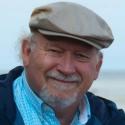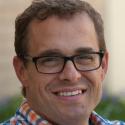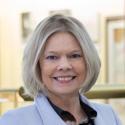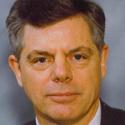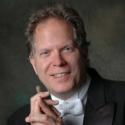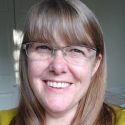2021 Artists Network
- Image
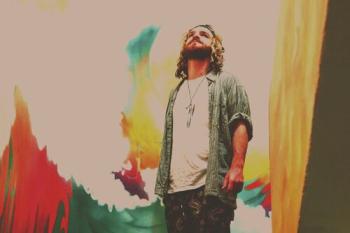
G.K. Chesterton wrote, “The function of imagination is not to make strange things settled, so much as to make settled things strange; not so much to make wonders facts as to make facts wonders.”
Artists of all types are tasked with inviting their viewers and hearers to see and listen. To make facts into wonders. Art is uniquely suited to enrich our prayer lives, catalyze renewed engagement with the Bible, foster empathy, enhance our spiritual perception, challenge our beliefs in healthy ways, and bring us into more intimate contact both with our Lord and the world. It invites us to slow down and gaze deeply. Art communicates, questions, and holds accountable. It stirs and reveals.
The arts in all their forms are good gifts from God, intended to be cultivated and employed, communicating God’s message for humanity. As artists, we need to mindfully consider how to practice the habit of seeing and listening on our own in order to create. At the 2021 gathering of the Artists Network, we will approach this way of contemplative seeing through the lenses of music, painting and visual arts, film, literature, and more.
Applicants should be artists who are engaging with society or the church. The Network provides a haven where Christian artists gather in community for relationship, spiritual nourishment, deep thinking, professional growth, and strategic possibilities.
Network Leadership
Network Speakers
Tim Basselin is Director of Field Education and Student Life and Associate Professor of Ministry, Theology and Culture at Western Theological Seminary in Holland, MI. He has taught for 15 years at the intersection of theology and culture, including classes on film, art, literature, and… Read more
Crystal Downing is Co-Director of the Marion E. Wade Center (Wheaton, IL), the foremost archive in the world for published and unpublished materials by and about C. S. Lewis and six of his most creative influencers, including Sayers. Crystal’s first book, Writing Performances: The Stages of… Read more
William Edgar is currently Professor of Apologetics at Westminster Theological Seminary in Philadelphia, USA. He was previously Professor of Apologetics at the Reformed Seminary in Aix-en-Provence. Before that he taught high school in Greenwich, CT, USA. He holds the Bachelor of Arts with Honors… Read more
Delta David Gier has been called a dynamic voice on the music scene, recognized widely for his penetrating interpretations of the standard symphonic repertoire, passionate commitment to new music, and significant community engagement. Orchestras Mr. Gier has conducted include the New York… Read more
Heather Holdsworth is a Bible teacher, author and artist. Her focus is on the Spiritual Formation of people of all ages. As a teacher she developed a keen interest in how people grow. Following a 2-year diploma in Practical Theology, she completed an MA in Spiritual Formation & Discipleship… Read more
Charles David Kelley is Latvian-American, a citizen of both countries. He serves as co-leader of the ELF Artist Network. Born in Los Angeles, he has lived in Oregon since 1980. His professional training is in biblical studies, theology, and missiology. Before founding Bridge Builders… Read more
Natalie Meeks is the President/CEO of Bridge Builders International, which ministers to artists in multiple countries in Europe and the US. She currently studies at Western Theological Seminary and, as a freelance writer, has penned articles about ministries all over the world Her Christian… Read more
Steve Thrall is a missionary pastor who has been involved in ministry in France for 33 years. During these years Steve’s urban ministry experience and pastoral responsibilities for three different Parisian churches led to a focus on the arts and care for artists. Steve helped launch a Christian… Read more
Network Programme
Sunday, 16 May
Colin Harbinson wrote: “Art at its best always invites us to see things in fresh ways and is able to move us to the truth about things.” Have you heard the expression “looking but not seeing?” We all do this every day… during meals, watching TV, working, shopping or driving. Our brains take in enormous amounts of visual information but don’t necessarily do anything with that information. The artist must not simply look but see – objects, shapes, colors, as well as connections.
We artists who follow the Lord Jesus require more than artists’ eyes. We require our sight to be clothed with insight. Do you agree with the 17th century English clergyman, Thomas Fuller, who wrote, “seeing is believing, but feeling is the truth”? Jesus had quite a lot to say about the relationship between looking and seeing... feeling and believing. His stories on this are rooted in the Great Commandment, “You shall love the Lord your God will all of you heart, soul, mind and strength, and love your neighbor as yourself.” If we see what Jesus sees, how will our art be transformed?
Called to live life on the edge of what’s known, as creatives, we push into spaces that are often unwritten. Facing blank scores, studios, and canvases we, ‘dip our brush into our own soul’ (Beecher) and our faith and identity tremble. Join us as we celebrate and consider the tensions of our commission.
Monday, 17 May
1 Peter 4:9-10 tells us that hospitality is a spiritual gift to be shared with loved ones and strangers alike. In fact, the Greek word translated as “hospitality” is actually a combination of two words—philos, meaning "affection" and zenos, meaning "stranger." Philoxenia – hospitality – is a sacred duty, signifying affection toward strangers. How then can the artist practice this hospitality through their art?
Whether through story, painting, song, film, poetry, sculpture, or other creative expressions of the heart of God, the Christian artist’s task is to communicate Truth and the Goodness of God in such a way that it translates to the hearts and souls of the hungry. In this session, we will consider what it means to approach art as an act of hospitality – to touch lives in an intimate, personal way and to create art that becomes a sanctuary for those whom God sends your way.
Western culture leads us to believe that artists work best as isolated, creative individuals. Scripture tells us, however, that God made all humans to fit naturally into a community. Creative people have unique skills and abilities which the whole community can benefit from. A healthy community is also a safe place to learn and grow in our areas of weakness. For artists to work collaboratively in community requires love, humility and a willingness to remain a learner. The combined creative assets of an artistic community can open many new doors and provides opportunities of societal engagement on a much greater scale than would be possible for individuals.
Tuesday, 18 May
C.S. Lewis wrote, “The first demand any work of art makes upon us is surrender. Look. Listen. Receive. Get yourself out of the way. (There is no good asking first whether the work before you deserves such a surrender, for until you have surrendered you cannot possibly find out.)” In this session we will consider a few ways film helps us practice this listening well, this surrender. We will watch a couple of short films together and discuss how to approach film, and art and one another, with a posture of receptivity.
Professional artists often find themselves at odds with both their workplace and their church. For musicians, whether on the concert stage or in the opera house, the prevailing assumption is that Christian faith is either naïve or intellectually dishonest. How does one faithfully live out one's calling in this atmosphere? And how does one contribute meaningfully to a church which either distrusts one's profession or finds it irrelevant to its mission? Join conductor Delta David Gier, along with a panel of professional musicians (soloists, opera singers, orchestral musicians), for a robust and honest discussion about life and faith in the midst of adversity.
The panel includes Khai Ern Ooi, Steve Morscheck, David Daly, and David Danel.
Wednesday, 19 May
In The Mind of the Maker (1941), Dorothy L. Sayers argues that artists understand the Trinity better than many theologians do. This presentation explains how and why, outlining the origins of what Sayers called a “Christian Aesthetic.” From participating in photography contests and musical performances during her youth, through her success as a bestselling detective fiction novelist who vacationed with painters, and into her groundbreaking theatrical works (one of which caused the biggest religious scandal in 20th century Britain), we shall explore how Sayers celebrated the cliché-shattering truth of both Christ and creativity.
“Will I ever arrive at the goal so sought after?” Cézanne saw himself as the Moses of modern art. Where was his promised land? Though Cézanne, the extraordinary “post-impressionist” painted only a few religious subjects, and no crucifixions, his testimony shows him to be a believer, having been raised in the church and having renewed his faith in his latter years. He attended mass inconsistently at first, then regularly later on in life. I will argue that his oeuvre makes little sense without recognizing the presence of the Creator God. We can see this in at least four ways: (1) his critique of idolatry [l’Éternel Féminin]; (2) reconciliations of mankind with the creation, and the individual with the self [Les Baigneuses]; (3) leading us to the invisible; from love to victory [La Montagne Sainte Victoire], (4) and perhaps most important, his break with his childhood friend Émile Zola.


